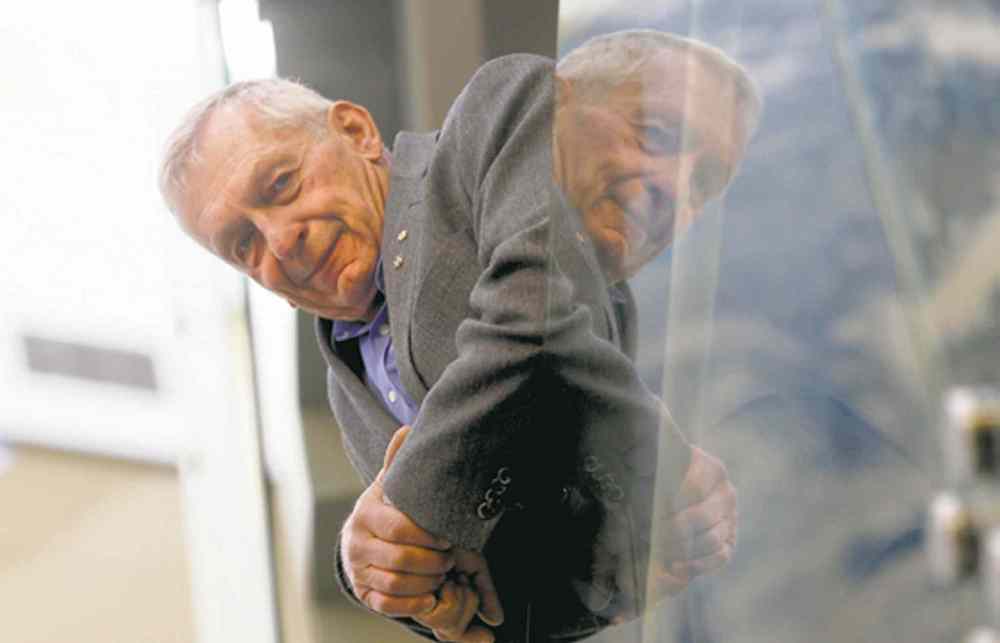Optimism high after research site rescued
Advertisement
Read this article for free:
or
Already have an account? Log in here »
To continue reading, please subscribe:
Monthly Digital Subscription
$0 for the first 4 weeks*
- Enjoy unlimited reading on winnipegfreepress.com
- Read the E-Edition, our digital replica newspaper
- Access News Break, our award-winning app
- Play interactive puzzles
*No charge for 4 weeks then price increases to the regular rate of $19.00 plus GST every four weeks. Offer available to new and qualified returning subscribers only. Cancel any time.
Monthly Digital Subscription
$4.75/week*
- Enjoy unlimited reading on winnipegfreepress.com
- Read the E-Edition, our digital replica newspaper
- Access News Break, our award-winning app
- Play interactive puzzles
*Billed as $19 plus GST every four weeks. Cancel any time.
To continue reading, please subscribe:
Add Free Press access to your Brandon Sun subscription for only an additional
$1 for the first 4 weeks*
*Your next subscription payment will increase by $1.00 and you will be charged $16.99 plus GST for four weeks. After four weeks, your payment will increase to $23.99 plus GST every four weeks.
Read unlimited articles for free today:
or
Already have an account? Log in here »
Hey there, time traveller!
This article was published 03/04/2014 (4236 days ago), so information in it may no longer be current.
With the Experimental Lakes Area saved, the Winnipeg institute that swung the deal to preserve it now faces an even tougher task.
It’s up to the International Institute for Sustainable Development to put together a team of scientists to steer the future of research at the world-famous site.
Ottawa and the provinces of Ontario and Manitoba signed a deal Monday to transfer the collection of deep-water lakes in northwestern Ontario and the science conducted there to the control of the Winnipeg think-tank.
Matt McCandless, the team leader for the section at the institute that will recreate the ELA, said he’s optimistic.
“I might challenge the idea that we have a tough task,” McCandless said. “We’re actually quite excited about this and we’re looking forward to hiring 10 to 12 new people,” he said.
With the word out, the think-tank is already taking calls, and it has the former chief scientist on staff as a senior fellow at the institute.
“To make sure we have the corporate memory to keep the ELA alive, we do have the chief scientist who was there, Michael Paterson. He spent several decades with the ELA,” McCandless said.
“We’re already being approached by people who worked for the ELA in the past and we’ve had a number of people interested in working for the IISD’s ELA.”
The team that used to lead the ELA was broken up bit by bit over two years of political and internal upheaval.
“I’ve always argued the ELA is not those buildings at the field station in northwestern Ontario, and it’s not those 58 lakes,” said Diane Orihel, the former ELA scientist who was the face of the Save the ELA campaign.
“It’s a science team that the government has invested in, training and building over four decades. It’s absolutely essential to try and preserve the integrity of that team.”
She said she’s relieved the site is saved. But just as important as the lakes are the scientists who work there, she said.
A core of 17 scientists led the ELA when it was under the federal Fisheries Department.
“Those 17 are at the centre of everything. They are the core of the ELA and they keep the ELA car on the road,” she said.
They included aquatic biologists, water chemists, microbiologists, computer programmers, technicians and managers.
Even before the axe fell, however, the team had withered, dropping from 27 scientists to 17.
The campaign to save the ELA couldn’t talk about what was happening to the scientists, even as leaders rallied scientists and celebrities worldwide organized a 30,000-signature petition that led to this week’s success.
Winnipeg was the heart of the campaign, accounting for 16,000 of the 30,000 signatures and countless public rallies, Orihel said. But none of the scientists could take part in public, she said. Federal policy forbid them from speaking out.

Orihel recounted the lengths Ottawa went to dismantle the ELA team for the first time Wednesday.
There were three main actions, she said, each prefaced with a letter that targeted the 17 scientists.
The first came May 17, 2012, with the decision Ottawa would mothball the ELA the following March.
That itself was a thunderclap, because it followed on the heels of tens of thousands of dollars in internal government grants designed to keep the ELA humming.
“Nobody was fired, but everybody’s job was jeopardized,” Orihel said. “Some of the 17 applied for other DFO jobs, some moved to other provinces, some left (their science careers). Some retrained. It was pretty sad.”
The second shoe to drop came March 21, 2013, with another letter. By that time, the campaign had whipped up a firestorm of opposition. Ottawa had relented and offered to hand over control of the site instead of mothballing it. The scientists were told their jobs were still on the line.
“By the end of November, whoever was left received a surplus letter — that’s the pink slip,” Orihel said.
But along with it, came offers for reasonable job offers instead of buyouts.
“It was a rotten thing to do. They could have just made them surplus and offered them cash-outs, but by giving them job offers they, forced them to accept other job offers,” Orihel said.
At least two scientists accepted posts to do arctic research on aquatic animals through DFO’s Winnipeg base of operations at the Freshwater Fish Institute, which kept the ELA’s chemistry lab. Others took federal jobs elsewhere, relocating their families to other parts of Canada.
alexandra.paul@freepress.mb.ca
History
Updated on Thursday, April 3, 2014 10:51 AM CDT: Corrects spelling of Michael Paterson's name



